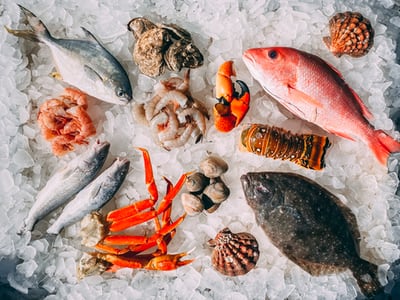With global fish stocks facing massive declines due to overexploitation, the practice of aquaculture has emerged to help meet the world’s ever-rising food demand. Aquaculture is the farming of aquatic organisms such as fish, shellfish, and seaweed under controlled conditions, taking place in land-based systems such as indoor tanks or water-based systems such as underwater cages. Over 50% of the world’s seafood now derives from aquaculture. In Africa it is a rapidly growing industry, nevertheless, the continent accounts for just 3% of total global production. As traditional agriculture continues to suffer from the effects of climate change, many believe that the expansion of sustainable aquaculture will be crucial to ensuring food security across the continent in the coming decades.
Is aquaculture environmentally sustainable?
The impacts of aquaculture are highly variable. At worst, it can be devastating for natural ecosystems, particularly coastal ones. For instance, in South East Asia, intensive shrimp farming has ravaged mangrove habitats, polluted coastal waters, and introduced exotic species into natural populations. On the other hand, there is great potential for low-impact aquaculture. Aquatic organisms are a highly efficient farming resource: as cold-blooded creatures (creatures whose body temperature is based on external conditions) they convert energy into muscle mass more efficiently than mammals such as cows, which use some of their energy to maintain a constant body temperature. This means that much less food is needed to produce the same amount of protein in farmed fish populations. This can greatly reduce pressure on land for the production of animal feed. In practice, however, the effects of aquaculture depend on many factors, including the species being farmed, the location of the farm, and the intensity of the farming methods.
Where has sustainable aquaculture been achieved?
Several African countries have begun to invest in sustainable aquaculture programs. One major initiative has been launched in Tanzania on the island of Zanzibar, where sea cucumber farming has become a large industry. Able to tolerate high water temperatures, sea cucumbers are resilient to climate-induced ocean warming, while carrying out numerous functions that support marine ecosystem health. Feeding on microscopic plants and debris, they do not require large food inputs (unlike carnivorous fish such as salmon), further reducing their environmental impacts.
First introduced to Zanzibar in 2011, sea cucumber farming now employs over 25,000 people on the island. While they are not seen as food – instead of being exported to Asia – they provide a crucial source of income that supports local livelihoods. Other countries such as Madagascar and South Africa are also investing in sea cucumber farming, alongside other low-impact organisms such as seaweed and oysters.
With the highest aquaculture growth rate in the world, aquaculture will likely become a significant part of Africa’s agricultural systems in the future. While most of Africa’s current seafood production comes from freshwater catfish and tilapia farms, meeting nutritional needs without compromising aquatic health will require continued investment into the farming of species with minimal negative environmental impacts.

